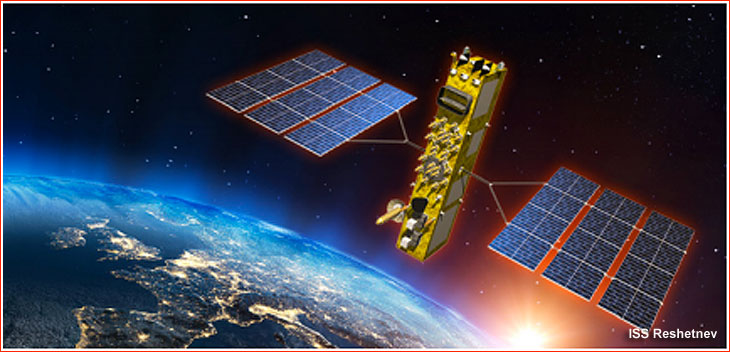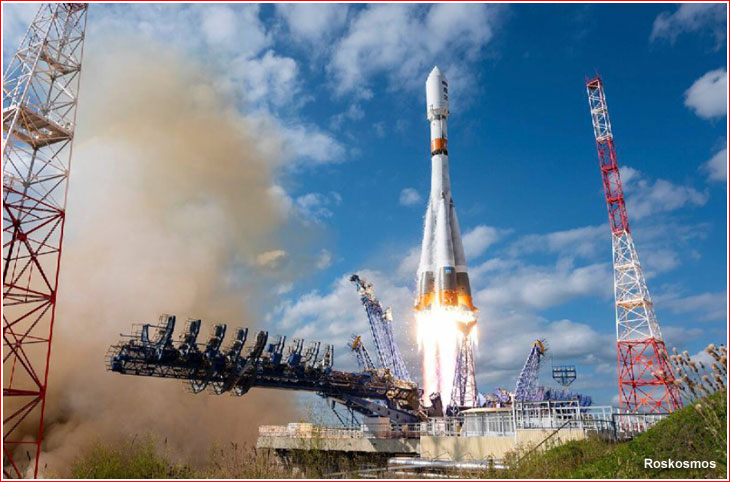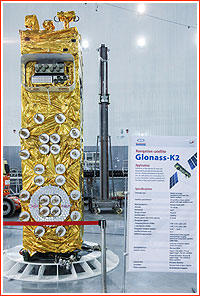Russia launches newly redesigned navigation satellite (original) (raw)
Russia launches newly redesigned navigation satellite
A Soyuz-2 rocket launched the first GLONASS-K2 spacecraft on Aug. 7, 2023, promising to improve the accuracy of the Russian dual-use global positioning system. The introduction of the K2 variant was delayed by at least a decade, primarily because of Western sanctions.
Previous chapter: GLONASS-K2 series

The GLONASS-K2 No. 13L mission at a glance:
Preparing the first GLONASS-K
In July 2016, ISS Reshetnev announced that it had begun testing the GLONASS-K2 satellite in the thermal and vacuum chamber, however the planned launch date for the satellite was not confirmed at the time.
Only in July 2018, did the head of ISS Reshetnev announce that the first launch of GLONASS-K2 was now expected in 2022. It would be launched either on a Soyuz-2 rocket from Plesetsk or on an Angara vehicle from Vostochny, Head of he company Nikolai Testoedov said at the time. According to industry sources, the GLONASS-K2 design and processing facilities also allowed its launch on Angara from Plesetsk.
On Sept. 5, 2018, Testoedov said that a total of nine GLONASS-K1 satellites were in production with the delivery of three vehicles scheduled for 2019, 2020 and 2021. He also promised the launch of the first GLONASS-K2 satellite during the following year. In November 2018, ISS Reshetnev announced that a pair of GLONASS-K2 satellites were in production. The company later disclosed that the first two K2 variants would be built in different configuration from later spacecraft in the series, probably indicating that only some of the planned upgrades for the spacecraft could be initially implemented, while other changes had to be left until better times.
Moreover, in October 2020, the Head of ISS Reshetnev reported that the launch of the first GLONASS-K2 had to be postponed to 2021, due to the need for upgrades in some of the equipment having been discovered during tests. As often, faulty electronics were rumored to be the culprit. In early 2021, the launch of the first GLONASS-K2 was expected in the fourth quarter of that year and, again, a pair of K2 variants was reported to be in assembly.
As of April 2021, the first satellite was reported completing assembly and undergoing testing, with all its onboard equipment already in place, however, by the middle of 2021, the first GLONASS-K2 mission had already slipped into 2022 and by the end of 2021, it was not expected before the second quarter of 2022, however, by then, the promised launch date drifted to the Fall of 2022.
In 2021, Head of ISS Reshetnev Nikolai Testoedov disclosed that mathematical problems (with onboard software) had caused the latest delays. (1017)
By the middle of 2022, the Fall 2022 date alternated with the beginning of Winter of that year. However, the Winter came and went, while the first launch by then shifted to April 2023.
In June 2023, Head of Roskosmos Yuri Borisov promised Putin the launch of the first GLONASS-K2 variant in August of that year. In parallel, up to 15 GLONASS-K satellites were slated for launch by 2030, according to a presentation of ISS Reshetnev in early 2022.
First GLONASS-K2 flies

The first GLONASS-K2 satellite finally reached the launch status in the middle of 2023, or a decade behind the original schedule. At the end of July 2023, the adminstration of the Safronovskoe settlement in the Lensk District in the Arkhangelsk Region (Oblast) posted a letter from the Deputy Commander of the Russian Space Forces, VKS, informing the local authorities about the use of the Vashka impact zone for the launch of GLONASS-K2 No. 13L satellite on Aug. 7, 2023.
Unusually, the dropped sections of the payload fairing were announced to be targeting an impact site in the Ust-Kulomsky district, indicating a different ascent scenario for the K2 mission from previous GLONASS launches. A later announced impact site in the Pacific Ocean, southeast of Australia, assigned for the third stage of the Soyuz-2 rocket, was also different.
According to the Russian Ministry of Defense, the launch of the Soyuz-2-1b rocket with a military payload took place at 16:20 Moscow Time (9:20 a.m. EDT) on Aug. 7, 2023. The spacecraft was expected to separate from the upper stage at 19:53 Moscow Time (12:53 p.m. EDT) and, soon after the expected separation time, the Russian military confirmed the successful insertion of the payload, identified as Kosmos-2569, into its prescribed orbit.
The US Space Force catalogued Kosmos-2569 in a 19,133 by 19,156-kilometer orbit with an inclination 64.8 degrees toward the Equator.
The spacecraft was reported reaching its orbital position between Sept. 2 and Sept. 8, 2023.
To be continued
Page author: Anatoly Zak; last update:September 12, 2023
Page editor: Alain Chabot; Last edit: August 7, 2023
All rights reserved

A display version of the GLONASS-K2 satellite. Credit: ISS Reshetnev
Soyuz-2-1b rocket with GLONASS-K2 No. 13L satellite lifts off from Plesetsk on Aug. 7, 2023. Click to enlarge. Credit: Roskosmos

)